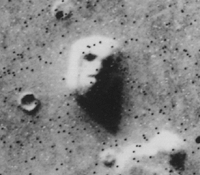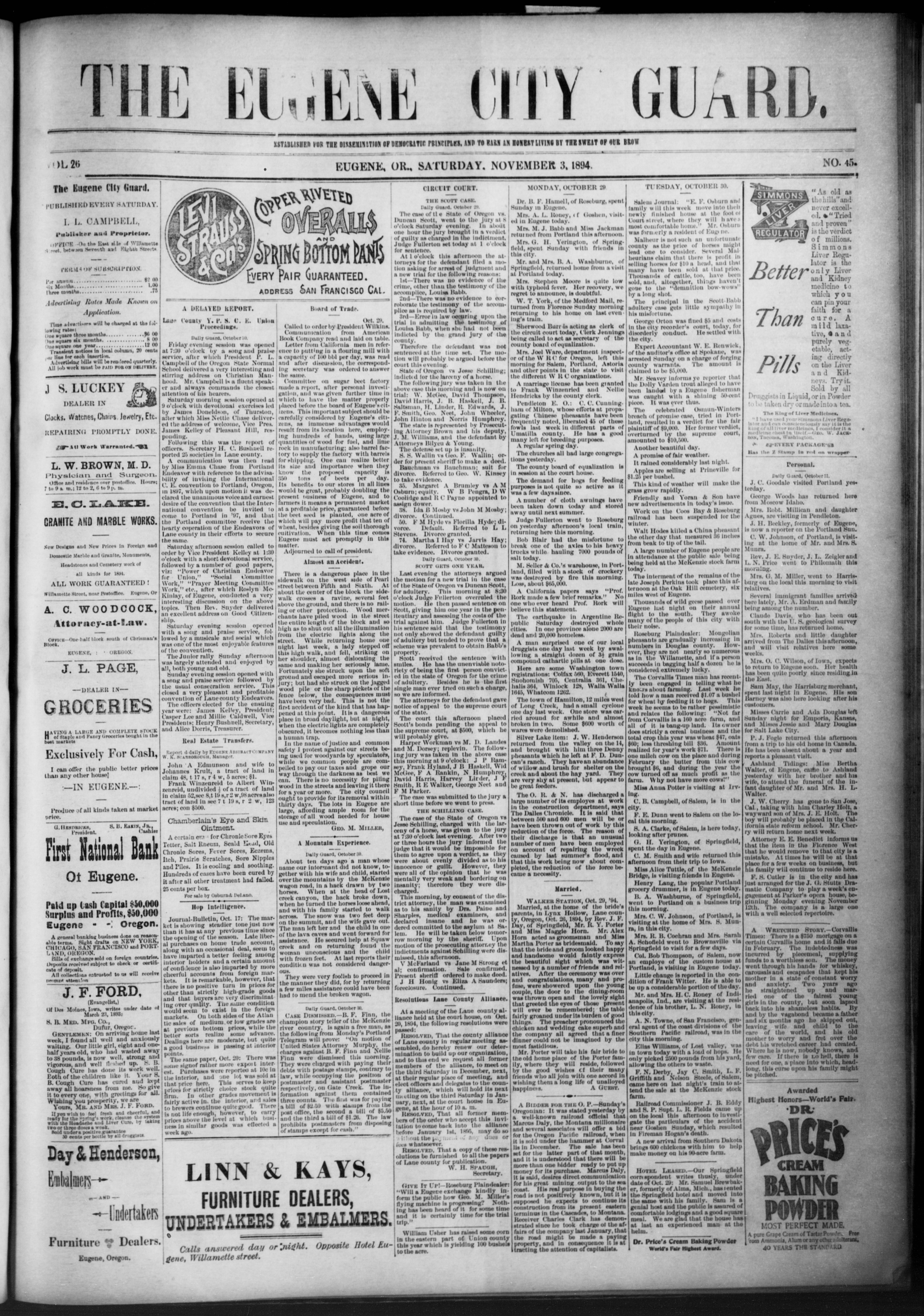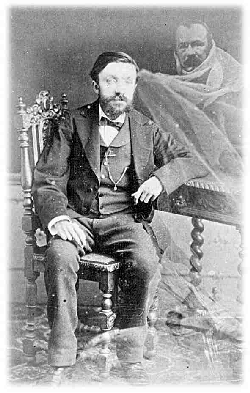|
James Alcock
James E. Alcock (born 24 December 1942) is Professor emeritus (Psychology) at York University (Canada). Alcock is a noted critic of parapsychology and a Fellow and Member of the Executive Council for the Committee for Skeptical Inquiry. He is a member of the Editorial Board of ''The Skeptical Inquirer'', and a frequent contributor to the magazine. He has also been a columnist for ''Humanist Perspectives'' Magazine. In 1999, a panel of skeptics named him among the two dozen most outstanding skeptics of the 20th century. In May 2004, CSICOP awarded Alcock CSI's highest honor, the In Praise of Reason Award. The author of several books and peer reviewed journal articles, Alcock is also an amateur magician and a member of the International Brotherhood of Magicians. Early life Alcock grew up in an observant Protestant household and regularly went to Sunday school. His mother was "very religious" and his father, though not outwardly observant, "never criticized religion". "When I star ... [...More Info...] [...Related Items...] OR: [Wikipedia] [Google] [Baidu] |
Central Butte, Saskatchewan
Central Butte is a town in Saskatchewan, Canada, approximately from Saskatoon, Regina, Saskatchewan, Regina and Swift Current, Saskatchewan, Swift Current and from Moose Jaw. Thunder Creek (Saskatchewan), Thunder Creek, a major tributary of the Moose Jaw River, begins west of the community. The town is served by the Central Butte Airport (TC LID: CJC4). History The first settlers arrived to farm in the Central Butte area in 1905, the same year Saskatchewan became a province. In 1906 a store and post office were established. A railway from Moose Jaw made it to the Central Butte area at the end of 1914, meaning the trips to Craik, Saskatchewan, Craik for supplies were no longer necessary. After the railway arrived, a permanent township was chosen and businesses moved in to the area. Demographics In the 2021 Canadian census, 2021 Census of Population conducted by Statistics Canada, Central Butte had a population of living in of its total private dwellings, a change of fro ... [...More Info...] [...Related Items...] OR: [Wikipedia] [Google] [Baidu] |
Peter Reveen
Peter Justin Reveen (8 October 1935 – 8 April 2013) was an Australian illusionist and hypnotist who performed mainly in Canada, and particularly Atlantic Canada. Early life Reveen was born in Adelaide, Australia, and traveled to the US in January 1961, landing in Honolulu, Hawaii. From there, he took a boat ride to San Francisco, California, and purchased a Greyhound Bus ticket to Vancouver, British Columbia. Reveen was granted a six-month visitor's visa on 16 March 1961. Career Reveen began his career in the town of Chilliwack, BC, booking himself into local community halls and legions, calling himself ''Reveen, the Impossibilist''. To promote his shows, Reveen offered complimentary tickets to all businesses willing to put a poster in their storefront window. In many towns, he also offered local radio stations a percentage of ticket sales in exchange for advertising. In 1962, ''The Man They Call Reveen'' was given the opportunity to perform in a movie house and his car ... [...More Info...] [...Related Items...] OR: [Wikipedia] [Google] [Baidu] |
Random Number Generators
Random number generation is a process by which, often by means of a random number generator (RNG), a sequence of numbers or symbols is generated that cannot be reasonably predicted better than by random chance. This means that the particular outcome sequence will contain some patterns detectable in hindsight but impossible to foresee. True random number generators can be '' hardware random-number generators'' (HRNGs), wherein each generation is a function of the current value of a physical environment's attribute that is constantly changing in a manner that is practically impossible to model. This would be in contrast to so-called "random number generations" done by ''pseudorandom number generators'' (PRNGs), which generate numbers that only look random but are in fact predetermined—these generations can be reproduced simply by knowing the state of the PRNG. Various applications of randomness have led to the development of different methods for generating random data. Some of ... [...More Info...] [...Related Items...] OR: [Wikipedia] [Google] [Baidu] |
Apophenia
Apophenia () is the tendency to perceive meaningful connections between unrelated things. The term ( from the ) was coined by psychiatrist Klaus Conrad in his 1958 publication on the beginning stages of schizophrenia. He defined it as "unmotivated seeing of connections ccompanied bya specific feeling of abnormal meaningfulness". He described the early stages of delusional thought as self-referential over-interpretations of actual sensory perceptions, as opposed to hallucinations. Apophenia has also come to describe a human propensity to unreasonably seek definite patterns in random information, such as can occur in gambling. Introduction Apophenia can be considered a commonplace effect of brain function. Taken to an extreme, however, it can be a symptom of psychiatric dysfunction, for example, as a symptom in schizophrenia, where a patient sees hostile patterns (for example, a conspiracy to persecute them) in ordinary actions. Apophenia is also typical of conspiracy theor ... [...More Info...] [...Related Items...] OR: [Wikipedia] [Google] [Baidu] |
Electronic Voice Phenomena
Within ghost hunting and parapsychology, electronic voice phenomena (EVP) are sounds found on electronic recordings that are interpreted as spirit voices. Parapsychologist Konstantīns Raudive, who popularized the idea in the 1970s, described EVP as typically brief, usually the length of a word or short phrase. Enthusiasts consider EVP to be a form of paranormal phenomenon often found in recordings with white noise, static or other background noise. Scientists regard EVP as a form of auditory pareidolia (interpreting random sounds as voices in one's own language) and a pseudoscience promulgated by popular culture. Prosaic explanations for EVP include apophenia (perceiving patterns in random information), equipment artifacts, and hoaxes. History As the Spiritualism (movement), Spiritualist religious movement became prominent in the 1840s–1940s with a distinguishing belief that the spirits of the dead can be contacted by medium (spirituality), mediums, new technologies of the er ... [...More Info...] [...Related Items...] OR: [Wikipedia] [Google] [Baidu] |
San Francisco Chronicle
The ''San Francisco Chronicle'' is a newspaper serving primarily the San Francisco Bay Area of Northern California. It was founded in 1865 as ''The Daily Dramatic Chronicle'' by teenage brothers Charles de Young and M. H. de Young, Michael H. de Young. The paper is owned by the Hearst Corporation, which bought it from the de Young family in 2000. It is the only major daily paper covering the city and county of San Francisco. The paper benefited from the growth of San Francisco and had the largest newspaper circulation on the West Coast of the United States by 1880. Like other newspapers, it experienced a rapid fall in circulation in the early 21st century and was ranked 18th nationally by circulation in the first quarter of 2021. In 1994, the newspaper launched the ''SFGate'' website, with a soft launch in March and an official launch on November 3, 1994, including both content from the newspaper and other sources. "The Gate", as it was known at launch, was the first large ma ... [...More Info...] [...Related Items...] OR: [Wikipedia] [Google] [Baidu] |
The Register-Guard
''The Register-Guard'' is a daily newspaper in the northwestern United States, published in Eugene, Oregon. It was formed in a 1930 merger of two Eugene papers, the ''Eugene Daily Guard'' and the ''Morning Register''. The paper serves the Eugene-Springfield, Oregon, Springfield area, as well as the Oregon Coast, Umpqua River valley, and surrounding areas. As of 2019, it had a supposed circulation of 18,886 daily. The newspaper has been owned by Gannett, The Gannett Company since Gannett's 2019 merger with GateHouse Media. It had been sold to GateHouse in 2018. From 1927 to 2018, it was owned by the Baker family of Eugene, and members of the family served as both editor and publisher for nearly all of that time period. It is Oregon's second-largest daily newspaper and, until the 2018 sale to GateHouse, was one of the few medium-sized family newspapers left in the United States. History Establishment ''The Guard'' was launched in Eugene, Oregon, Eugene City on Saturday, June 1, ... [...More Info...] [...Related Items...] OR: [Wikipedia] [Google] [Baidu] |
Skeptic's Toolbox
The Skeptic's Toolbox was a four-day workshop devoted to scientific skepticism. Founded by psychologist and now-retired University of Oregon professor Ray Hyman, it was sponsored by the Committee for Skeptical Inquiry. Annual workshops focused on educating people to be better critical thinkers, and involved a central theme. The attendees formed small groups and were given tasks that to work on and whose results they then presented to the entire workshop on the final day. History Hyman created the Skeptic's Toolbox in 1989 to teach people how to be better skeptics. He tells James Underdown that "we were putting out more fires by skeptics than by believers... they were going overboard". The first toolbox was in Buffalo, NY with himself, James Alcock and Steve Shaw (now called Banachek). With the exception of the first year in Buffalo and one year when the toolbox was held in Boulder, Colorado, the toolbox was held at the University of Oregon in Eugene. Attendance was generally ... [...More Info...] [...Related Items...] OR: [Wikipedia] [Google] [Baidu] |
The Skeptic Zone
Richard Saunders is an Australian Scientific skepticism, scientific skeptic and podcaster. In 2001, he was awarded a life membership by Australian Skeptics and has twice served as their president. He has presented on skepticism, represented the Australian Skeptics on television and radio shows, and is the co-host of ''The Skeptic Zone'' podcast. Early life Saunders was born in Kurri Kurri, New South Wales, Australia. His father, R. H. Saunders, a reverend, was posted in Tribune, Saskatchewan, where he lived in 1968 and 1969. Professional career Web design After graduating from high school, Saunders joined educational publisher Ashton Scholastic and sold educational software for Apple II and Commodore 64 home computers. He also worked as a web designer for The Advance Bank of Australia and Commonwealth Bank and in 1999 was transferred to EDS, where he designed the interface for netBank online banking and worked for two years before joining GreenStone Pty Ltd as a web designer ... [...More Info...] [...Related Items...] OR: [Wikipedia] [Google] [Baidu] |
Chris French
Christopher (Chris) Charles French (born 1956) is a British psychologist who is prominent in the field of anomalistic psychology, with a focus on the psychology of paranormal beliefs and anomalous experiences. In addition to his academic activities, French frequently appears on radio and television to provide a skeptical perspective on paranormal claims. He is currently a Professor Emeritus of Psychology at Goldsmiths College, University of London, and the head of the Anomalistic Psychology Research Unit, which he founded in 2000. French emphasizes the importance of understanding why people believe in the paranormal and advocates for taking these claims seriously to explore the underlying psychological factors involved. He has conducted research on various paranormal phenomena, including psychic abilities, ghosts, UFO abductions, and astrology. French is also involved in academia, teaching courses on psychology, parapsychology, and pseudoscience. He has published numerous art ... [...More Info...] [...Related Items...] OR: [Wikipedia] [Google] [Baidu] |
Parapsychology
Parapsychology is the study of alleged psychic phenomena (extrasensory perception, telepathy, teleportation, precognition, clairvoyance, psychokinesis (also called telekinesis), and psychometry (paranormal), psychometry) and other paranormal claims, for example, those related to near-death experiences, synchronicity, apparitional experiences, etc. Criticized as being a pseudoscience, the majority of mainstream scientists reject it. Parapsychology has been criticised for continuing investigation despite being unable to provide reproducible evidence for the existence of any psychic phenomena after more than a century of research. Parapsychology research rarely appears in mainstream scientific journals; a few niche journals publish most papers about parapsychology. Terminology The term ''parapsychology'' was coined in 1889 by philosopher Max Dessoir as the German . It was adopted by Joseph Banks Rhine, J. B. Rhine in the 1930s as a replacement for the term ''psychical research'' ... [...More Info...] [...Related Items...] OR: [Wikipedia] [Google] [Baidu] |







